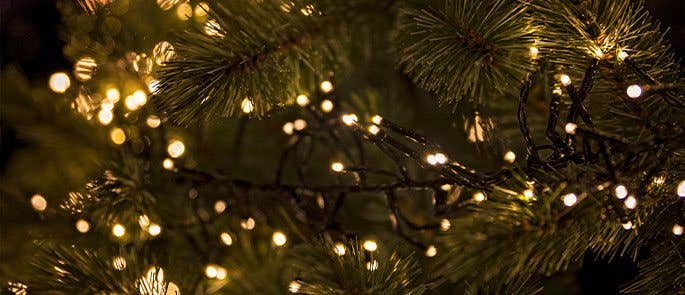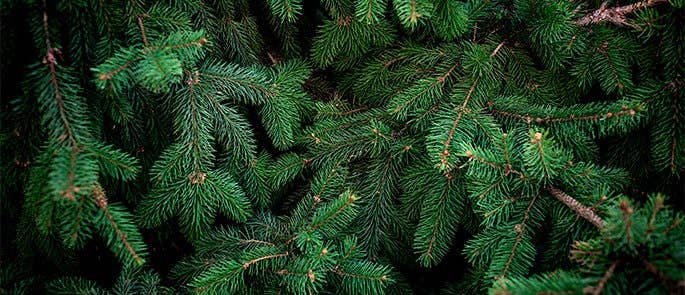Christmas Tree Safety
O Christmas tree, o Christmas tree, how lovely are your branches! Of all the familiar signs of festivity, the Christmas tree stands tall (pun very much intended) as one of the most recognisable. From houses to highstreets, workplaces to warehouses, Christmas trees are an undeniable staple of the season; where else is Father Christmas supposed to put all your presents! Christmas trees are a decorative tradition, however they can present safety risks. In this article we will cover everything you need to know about Christmas tree safety so you can enjoy the season safely.
What Christmas Tree Should I Buy?
There are lots of different options when it comes to buying a Christmas tree. Whether you fancy a show stopping Nordmann Fir, or an avant-garde pink artificial tree, the choices are truly endless and can suit any style, budget and space availability. Whilst artificial trees have grown in popularity, real trees have a lower carbon footprint, are easier to recycle and have a look and smell that embodies the season. This article will primarily focus on real trees.
When buying a real Christmas tree you need to consider the type, the source and where it will be placed. The Soil Association recommends sourcing Forest Stewardship Council (FSC) certified, organically and locally grown trees. FSC trees are grown responsibly and often with minimal pesticide use and locally grown trees support the local economy and produce fewer carbon emissions from transportation.

You also need to consider the freshness of your tree. Aged trees are often drier and therefore more flammable, increasing the risk of accidental fires. Fresh trees have a strong green colour and a recognisable strong scent making choosing a freshly felled tree relatively simple. The trunk of the tree should be sticky to the touch and the needles hard to pull off from the branches. A good way to check the freshness is to bounce the tree trunk on the floor. A few needles falling off is to be expected, but if a lot of needles fall off, then the tree is likely too old.
Finally, don’t get carried away by the excitement of the festive season and buy your tree too soon! The clock striking midnight on 1st November might have been enough to signal the start of Christmas for some, but your tree is going to struggle to keep looking its best if you put it up too soon. Think of your Christmas tree like a bouquet of cut flowers, as pretty as it might be, it won’t last forever.
The general advice is to wait till the first weekend of December, however the lifespan of your Christmas tree will depend on the variety you choose and how well you care for it. For example, Nordmann Firs are known for great needle retention meaning you can buy it earlier and your tree will still look fresh and lush for the big day. Comparatively, the needles of a Norwegian Spruce tend to fall quicker than other varieties, so you are best waiting nearer to Christmas to buy one.
Where to Put a Christmas Tree
You might have been eyeing up that cosy corner in the living room or that handy nook under the stairs to display your tree, but there are a few practicalities to consider when it comes to where to put a Christmas tree.
Size – There is no denying that a 12ft tree makes a great impact. However, it’s important that your tree comfortably fits the intended space. A large Christmas tree can take up too much room creating access issues, impeding movement and causing potential hazards. Make sure that your tree fits the space you have in mind and consider moving it to a different room or trimming some of the branches if it is too big.
Heat Sources – Avoid placing your tree next to a heat source such as radiators or fire places. Heat can cause real trees to dry out quickly, increasing their fire risk and reducing their longevity. It is advised to keep your tree at least three feet away from a heat source.

Plug Sockets – Fairy lights can be the perfect finishing touch to your tree. Place your tree close enough to a socket to avoid trailing cables across the floor, but far enough away to reduce the risk of fire from any sparks. Your Christmas tree may have multiple decorations that need to be plugged in, but remember, overloading sockets can be dangerous.
In order to use your plug sockets safely:
- Only use one extension lead per socket.
- Avoid ‘daisy chaining’ or plugging one extension lead into another.
- Check the wattage of each decoration/appliance in use.
- Regularly inspect sockets for signs of overheating (i.e. scorch marks).
Access – You need to ensure that your tree doesn’t block important access points. Avoid placing your tree in areas with high thoroughfare such as a small hallway or behind a door. This decreases the chances of the tree falling and becoming a hazard, as well as ensuring you can still safely and swiftly exit the area should you need to. If you’re using decorations that need to be plugged in, it’s important to make sure that you can easily reach the plug to turn them off when not in use.
How Do Christmas Trees Catch Fire
Though traditional symbols of the season, Christmas trees are essentially gigantic pieces of kindling and there is an undeniable risk of them catching fire.
A common cause of Christmas tree fires is dried-out trees. Contrary to popular belief a Christmas tree cannot catch fire by itself, but a single spark can cause a dry tree to go up in flames within seconds, spreading to furniture, walls and carpets in a matter of minutes. It is therefore important to keep your tree well watered. Forestry England advises keeping your Christmas tree in water at all times, so choose a sturdy stand that can hold a large amount of water. Don’t forget to regularly check your tree’s water levels since Christmas trees can drink a whopping two to three pints of water a day! It is also advisable to give your trunk a trim and saw off about half an inch once you bring it home to help it better absorb water.

Despite being less flammable than real trees, artificial trees are still vulnerable to fire so if you are buying an artificial tree, aim to buy a fire retardant/resistant one. However, be mindful as fire retardant compounds can wear off over time, so if your tree has been knocking around in the loft for a few years, it might be time for something new. Dust build-ups can also increase flammability so clean your artificial tree before use and before storage.
Can Christmas Tree Lights Cause Fires?
The short answer is yes. Whilst today’s fairy lights are safer than those from years gone by, they still pose a safety risk. Christmas tree lights become fire hazards when left in contact with something flammable such as paper decorations, plastic leaves or real leaves. A single spark from faulty lights can cause a fire that quickly becomes uncontrollable.
To reduce the risk of fire:
- Check your lights for any signs of visible damage such as frayed wires.
- Check the fuses and replace any blown bulbs.
- Try to plug your lights directly into the plug socket rather than an extension cord, but be careful not to overload the socket.
- Don’t leave lights plugged in for an extended period of time; if you are forgetful get a timer that will automatically switch your lights off.
- Ensure the lights that you use have a CE mark to show that they comply with European safety standards.
- Only use indoor lights inside and outside lights outside.
Following these tips can greatly reduce the chance of fire, however your tree isn’t the only potential fire hazard during Christmas. Read our article on fire safety tips for Christmas for further guidance on how to stay safe throughout your festive season.

Christmas Tree Safety Tips
Keep your festive season fun by staying vigilant and planning ahead. Small changes can make the world of difference to your safety, so remember these top tips to keep your Christmas tree safe:
- Buy your tree from a reputable seller – Whether you are buying a real or an artificial tree ensure that they are from a reputable place. If you are buying a real tree aim for FSC certified, organic and locally sourced. If you are buying an artificial tree aim for one that is fire retardant/resistant and has a CE mark.
- Look after your tree – Keep your real tree well watered and your artificial tree clean and free from dust. Regardless of which tree you have, keep it away from any heat sources.
- Be careful with plug sockets – Avoid overloading your plug sockets or ‘daisy chaining’ extension cords. Don’t leave your decorations plugged in for an extended period of time.
- Check your decorations – As with your tree, buy your decorations from a reputable supplier and ensure they have a CE mark. Check for any visible signs of damage, such as frayed wires or blown fuses before use and replace any lights/decorations that are no longer safe to use.
What Should I Do with my Tree After Christmas?
The perfect way to wrap up your Christmas season is by disposing of your tree properly. There are many different ways to reduce waste at Christmas and disposing of your tree in an environmentally friendly manner is equally important. Regardless of whether you wait for Twelfth Night to take down your decorations, or the second those Boxing Day leftovers are done, once your Christmas tree is dry it’s time to get rid of it.

Some eco-friendly ways to dispose of your tree include:
- Recycling it.
- Replanting it (if it has roots).
- Composting it.
- Shredding it.
- Chopping and stacking it for firewood.
Christmas is a time of wonder, excitement and joy for many, giving us the chance to reconnect with loved ones and share the spirit of the season. The best festive season is a safe one and by taking a few precautionary steps you can ensure you and your family enjoy the season safely. Your attention might usually be focused on whether you have enough pigs in blankets for the table (spoiler alert; you don’t), but it is equally important to consider the potential hazards a Christmas tree can pose and to deal with them accordingly.
Further Resources:
- Fire Safety Tips for Christmas
- Planning a Christmas Dinner: Free Checklist
- Online Health & Safety Courses







